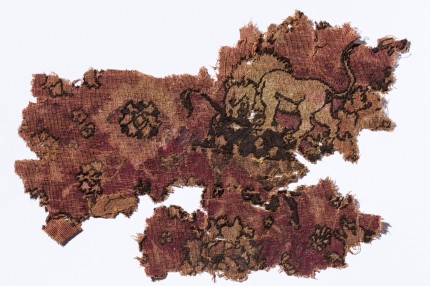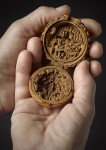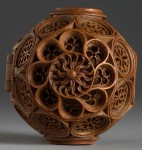 Workers expanding a waste-water sanitation system in the village of Beit Ras in northern Jordan have unearthed a Roman or Byzantine-era tomb decorated with vibrantly colored frescoes. In rich reds, greens, yellows and pinks, the oil frescoes depict people and their animals in daily life, agricultural workers, grape vines and scenes from mythology. There are Greek inscriptions above the While some areas are eroded, on the whole the art is remarkably well-preserved and provides a unique insight into the funerary rituals of the city of Capitolias in late antiquity.
Workers expanding a waste-water sanitation system in the village of Beit Ras in northern Jordan have unearthed a Roman or Byzantine-era tomb decorated with vibrantly colored frescoes. In rich reds, greens, yellows and pinks, the oil frescoes depict people and their animals in daily life, agricultural workers, grape vines and scenes from mythology. There are Greek inscriptions above the While some areas are eroded, on the whole the art is remarkably well-preserved and provides a unique insight into the funerary rituals of the city of Capitolias in late antiquity.
The tomb includes a cave with two burial chambers. The larger chamber contains a basalt stone rock-cut tomb decorated with raised etchings of two lion heads and with several human bones enclosed. […]
The inscriptions and some artifacts found in the tomb are being analysed to give a more accurate time-frame of when this tomb was built and who it was built for. […]
Her Excellency Minister of Tourism and Antiquities Ms. Lina Annab, following a visit to the site, confirmed that the Department of Antiquities will continue to excavate, expand and prepare the site for future visitors. Her Excellency also confirmed that due to the tomb’s archaeological value, the site has been closed off to visitors and on-lookers to protect the archaeological integrity of the tomb as more tests are being run to ascertain more information about its significance.
 The ancient city of Capitolias was founded in the 1st century A.D. under the reign of either Nerva or Trajan. The planned city, dedicated to and named after the god Jupiter Capitolinus, prospered. By the 2nd century it was encircled by a defensive wall and continued to grow in regional significance. It was one of the cities of the traditional Decapolis, a group of 10 cities that were centers of Greek and Roman culture in the Levant. Capitolias was populated through the Umayyad period in the 10th century, and there are records of Latin titulars assigned to the city as late as the 14th century.
The ancient city of Capitolias was founded in the 1st century A.D. under the reign of either Nerva or Trajan. The planned city, dedicated to and named after the god Jupiter Capitolinus, prospered. By the 2nd century it was encircled by a defensive wall and continued to grow in regional significance. It was one of the cities of the traditional Decapolis, a group of 10 cities that were centers of Greek and Roman culture in the Levant. Capitolias was populated through the Umayyad period in the 10th century, and there are records of Latin titulars assigned to the city as late as the 14th century.
 The site wasn’t thoroughly excavated until the 1980s, and there were limitations on how much of the area could be explored without interfering with the modern village. Very few structures have been found — a smattering of the surface remains of the city walls, a marketplace, a colonnade, an aqueduct — but there’s little left of most of them. The largest single surviving ancient structure is the 2nd century Roman theater.
The site wasn’t thoroughly excavated until the 1980s, and there were limitations on how much of the area could be explored without interfering with the modern village. Very few structures have been found — a smattering of the surface remains of the city walls, a marketplace, a colonnade, an aqueduct — but there’s little left of most of them. The largest single surviving ancient structure is the 2nd century Roman theater.
 Other archaeological finds, large numbers of glass fragments from the 3rd-5th century which are evidence of a major secondary glass production industry in Capitolias, indicate Capitolias was economically prominent in the region well into the Byzantine era. The newly discovered tomb may fill in more blanks about this same period.
Other archaeological finds, large numbers of glass fragments from the 3rd-5th century which are evidence of a major secondary glass production industry in Capitolias, indicate Capitolias was economically prominent in the region well into the Byzantine era. The newly discovered tomb may fill in more blanks about this same period.








